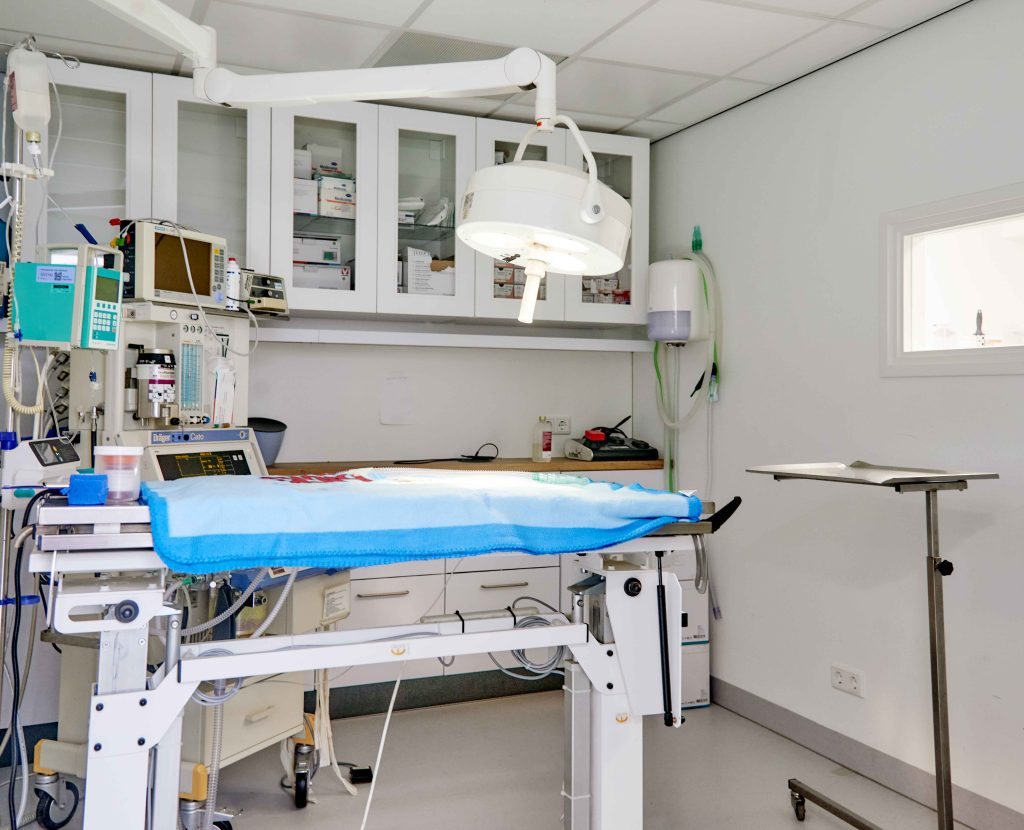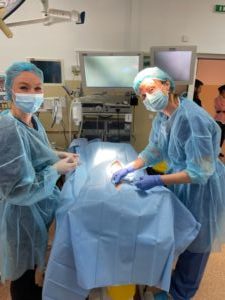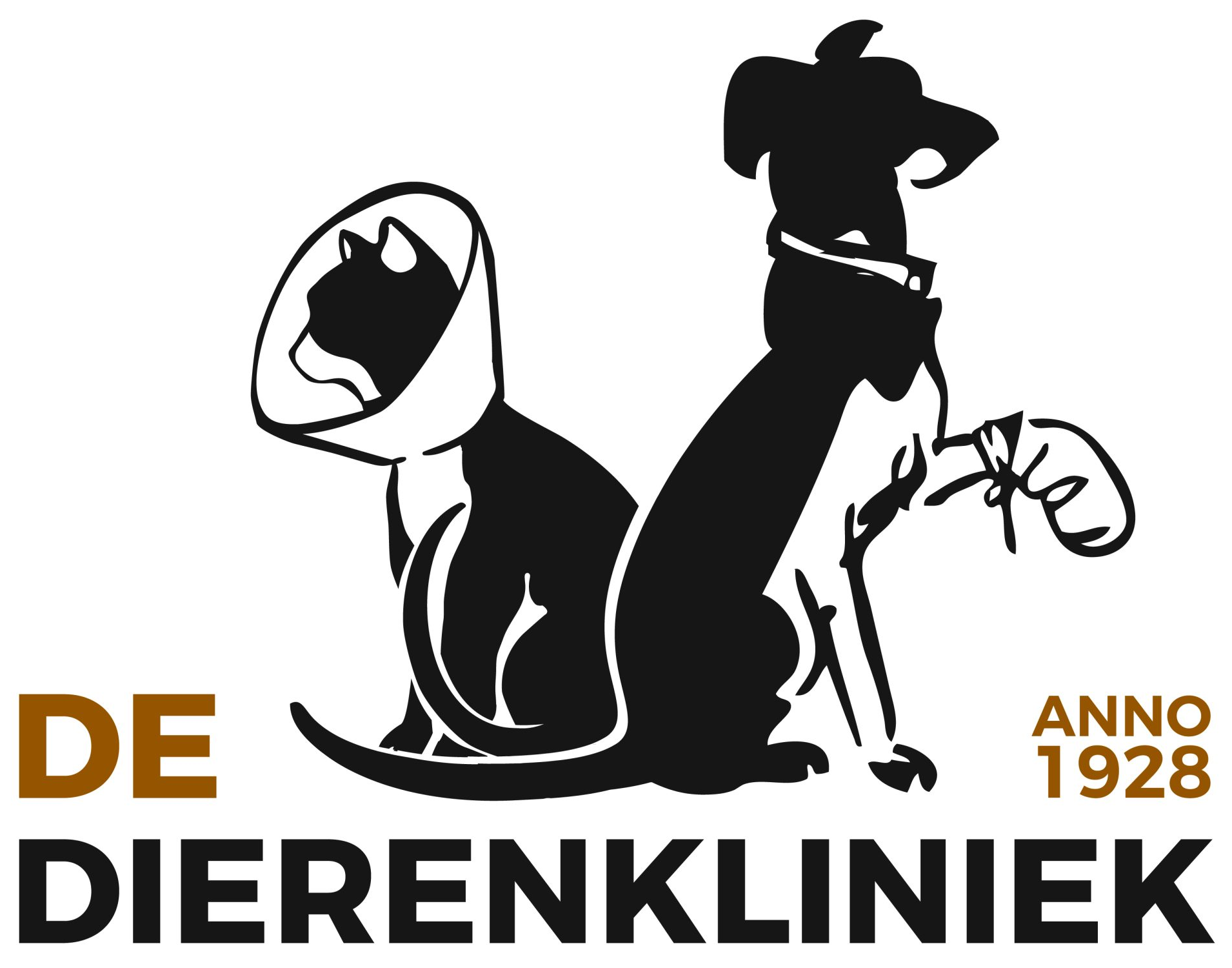Surgery
Our veterinarians have extensive surgical experience. This allows us to perform most surgeries in-house. All our clinics have a very extensive operating room provided with modern equipment.
For more specialized operations, we work closely with, among others, the Medisch Centrum voor Dieren and the Faculty of Veterinary Medicine in Utrecht.
Pre-care
Pre-care is a very important part of surgery. Before we begin surgery, the patient is checked completely. Among other things, we listen to the heart and lungs and feel the body carefully. However, some problems are not always detectable on the outside. Think of latent liver or kidney problems. Since we always want to use the most appropriate and safest anesthesia possible, it is important to include these types of problems in the decision-making process. Therefore, especially in older animals, we usually perform a pre-anesthetic blood test to check the main organs that have to process the anesthetic.
Preparation
If your animal is going to have surgery, there are a number of things you need to consider. For example, it is very important that your animal has en empty stomach for the surgery. This means that he/she should not have any food for 12 hours prior to the surgery. Animals may vomit from the anesthesia. If they have eaten, food can get stuck in the throat during vomiting, which can cause choking or choking pneumonia. Your animal is allowed to drink water. Different rules apply to guinea pigs and rabbits, with these animals it is actually very important that they keep eating.
Before you bring your animal to the clinic, we advise you to let him or her out for a walk thoroughly. During anesthesia, they may let their urine and feces run and this causes contamination.
Monitoring during surgery
Your animal will be closely monitored during surgery. For this we use gas anesthesia, respirators and monitoring equipment with which we measure the heart rhythm, CO2 level and oxygen level of the blood as standard. Your animal is also supported during surgery with IV fluid therapy. In this way, we ensure that the surgery is as safe as possible.
Recovery and aftercare
After the surgery, we put your pet in a warm and comfortable place in the Recovery room. This room is attached to the operating room so we can keep a constant eye on your pet while he/she is waking up. Meanwhile, the attending veterinarian calls you to let you know how the treatment and anesthesia went.
Your pet may go home when he or she is sufficiently awake. You will be called by one of our nurses to arrange a time to pick him/her up. When you pick up your pet, we will discuss all aftercare with you, such as when your pet can eat and drink again, what you should pay attention to after surgery and how to give any medication. This information will also be given to you in a letter.
We would like to see your pet back at the clinic after 7-10 days for a check-up. There are no costs involved. Of course you may always contact us in the meantime if you have any questions.

Did you know that we perform most surgeries laparoscopically?
In this surgery, we only make a small hole that allows us to see what we are doing with a camera. This is much better for your pet and the recovery!


